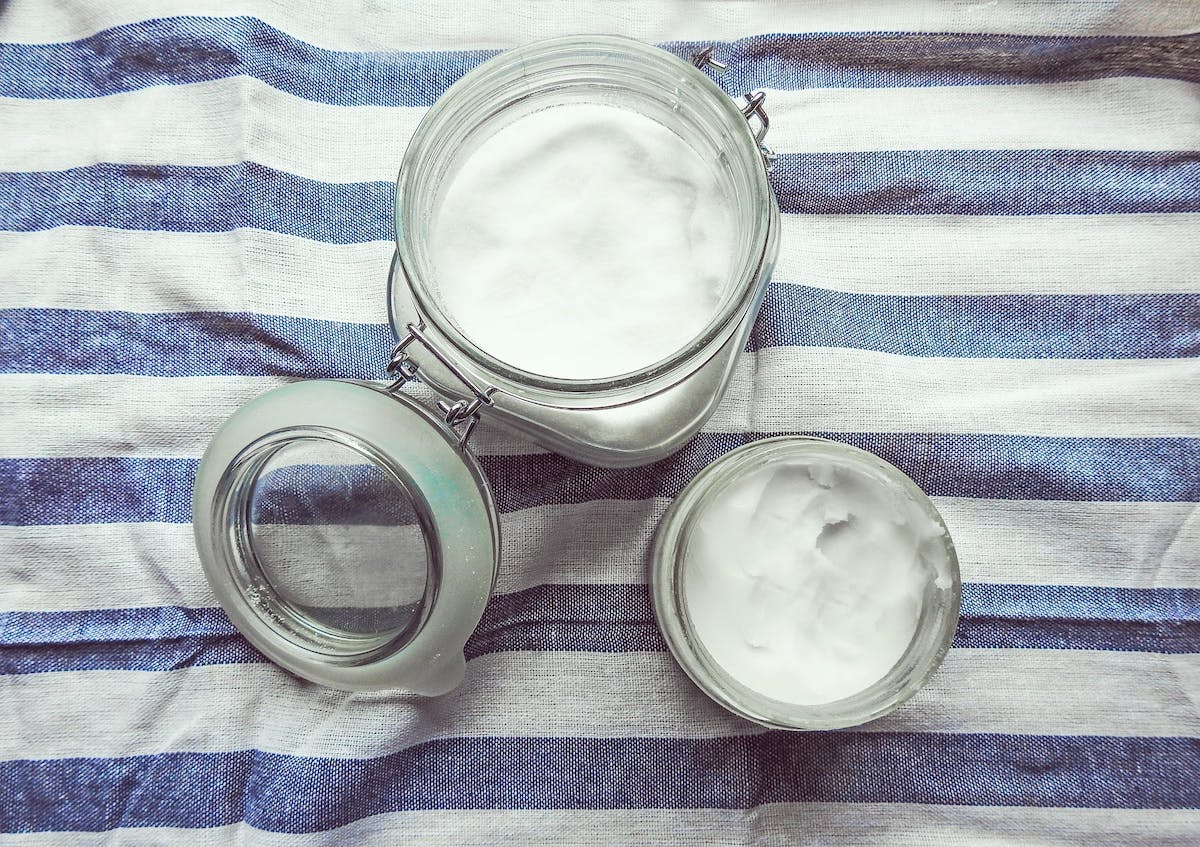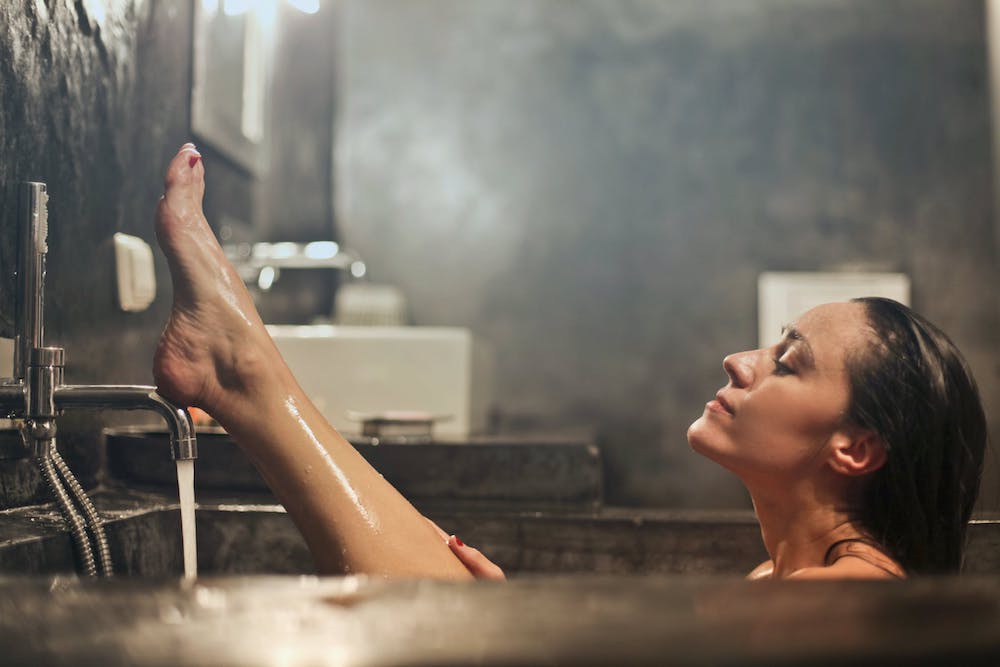If you shave then you most likely have dealt with razor burn.
Shaving is an easy, fast, and affordable way to remove unwanted hair, but it can cause redness, irritation, and bumps on your skin. Razor burn can occur anywhere you shave and have annoying side effects.
Read on to learn how to get rid of razor burn, how to prevent it in the first place, and also…
The 7 best natural treatments for razor burn, which are:
- Aloe Vera
- Coconut Oil
- Sweet Almond Oil
- Witch Hazel
- Calendula
- Tea Tree Essential Oil
- Lavender Essential Oil
What Is Razor Burn?

Razor burn is an uncomfortable skin condition that can occur after shaving your legs, facial hair, underarms, or other body parts to remove unwanted hair. It is usually a result of shaving too close to the skin, which can cause irritation.
Razor burn is common and most people have experienced the condition at least once. If you have more sensitive skin, you may experience it every time you shave.
If you get razor burn it is rarely serious and usually last a few hours to a few days, depending on how sensitive your skin is.
Razor burn is common for sensitive skin types but can also be a result of bad shaving techniques.
Razor Burn Symptoms
- Bumps on the surface of the skin
- Redness that can have a rashy appearance
- A stinging sensation
- A Burning sensation
- Irritation and inflammation
How To Get Rid Of Razor Burn (Naturally)

Here are the best natural treatments to get your skin back to being radiant and smooth:
1. Aloe Vera
Aloe vera is a great natural remedy for razor burn. Its anti-inflammatory properties will help soothe and heal burns. It is commonly used for skin irritations and is a great choice if you are prone to razor burn.
To use aloe vera, snip the tip of an aloe leaf and squeeze the gel directly onto the razor burn. You can also purchase pure aloe vera gel at a natural food store or natural skincare company.
2. Coconut Oil
Coconut oil has anti-inflammatory and antiseptic properties that can help get rid of razor burn. To treat your skin, apply a thin layer of organic, expeller-pressed coconut oil to the inflamed area.
It can also be used as a moisturizing shave oil to help you have a closer shave without the uncomfortable side effects. The shaver will glide over your skin and may cause less irritation.
3. Sweet Almond Oil
Almond oil is high in fatty acids, vitamin E and vitamin A which helps keep your skin healthy, protected and smooth.
If you have razor burn, apply almond oil directly to your skin as a moisturizer. It will help heal, soothe and moisturize irritated skin. It is best applied to your skin immediately after shaving to get rid of razor burn.
4. Witch Hazel
Witch hazel is a natural astringent and has anti-inflammatory properties. You can use it to soothe burns, relieve pain, and treat minor skin irritations.
Witch hazel will help reduce inflammation, redness, and help repair broken skin caused by razor burn. To get rid of razor burn, apply to razor burn with a cotton pad as needed.
5. Calendula
Calendula infused oils and creams can help reduce inflammation, heal skin irritation, and promote healing. To help ease razor burn symptoms, apply calendula cream or oil to the area once or twice a day.
6. Tea Tree Essential Oil
If you have razor bumps as a symptom, the anti-inflammatory and antibacterial properties of tea tree essential oil will help treat your skin.
Tea tree oil is a natural astringent and can help to alleviate skin irritated from shaving. To get rid of razor burn, mix tea tree oil in a carrier oil and apply to the affected area. Use 1 to 3 drops of tree oil per teaspoon of carrier oil.
7. Lavender Essential Oil
Just like tea tree oil, the lavender essential oil is a great remedy for razor burn because of it’s antibacterial and anti-inflammatory properties.
Applying to your skin diluted in a carrier oil will help soothe and heal your skin. Reduce redness and irritation of razor burn by applying diluted lavender oil and gently massage onto the skin.
The Difference Between Razor Burn And Razor Bumps
A side effect of razor burn can be razor bumps, but the two skin conditions are not one and the same. Razor bumps are a more severe form of shaving irritation and may need assistance from an esthetician or doctor to help clear up.
Razor Burn- Is irritated skin that has redness and inflammation. It is a side effect of using a razor for hair removal.
Razor Bumps- Are ingrown hairs, also known as folliculitis. After shaving, when the hair begins to regrow, instead of growing straight out of the hair follicle, it grows back underneath the skin. It is more common if you have curly hair.
Razor bumps are red and can look like pimples if the area becomes infected and filled with pus.
How To Prevent Razor Burn (In The Future)

Shaving is one of the least liked grooming rituals and can be a challenge, especially if you have sensitive skin. A common side effect is razor burn, which makes shaving even more of a nuisance.
But, there are many ways to get rid of razor burn as well as prevent them in the first place. Here are few ways to have a clean shave without the uncomfortable razor burn:
Prep The Skin
Prep your skin before shaving to help prevent frequent razor burn. Gently exfoliate your skin with a dry brush or body scrub towel before shaving to slough off any build-up of dead skin cells.
Before shaving, apply shaving cream, lotion, or oil. Lathering up will help your skin stay smooth and clear.
Skip Dry Shaving
Dry shaving can cause irritation and redness. To avoid razor burn, be sure to wet your skin before shaving. This will help soften the hair. Shaving in the bath or shower with warm water will help you have the best results.
Shave In The Right Direction
Yes, there is a right and wrong way to shave. Sadly, most people are taught to shave incorrectly. So what is the right way?
Always shave in the direction of hair growth, not against.
While shaving against the direction of hair growth can give you a closer, smoother shave, it can also give you nicks, ingrown hairs, and razor burn.
For legs, shave in the direction your hair grows. On your first pass, shave down the leg and then shave up the leg. If you have sensitive skin, don’t shave upward at all.
Don’t Use Old Blades
Old blades are ineffective and are more likely to cause bumps, redness, and razor burn. Be sure to change your razor blade often.
Usually after 5 to 7 shaves. Minimize your chances of razor burn and throw away old blades when they show signs of dullness.
It should also be said that you should keep your blades clean. While using your shaver, keep it clear of hair, debris, and soap.
Don’t Shave Every Day
Especially if you have sensitive skin. Shaving every day can cause your skin to get razor burn. Shaving too often and too close to the skin can cause you to have uncomfortable symptoms. For best results, shave every two to three days.
Don’t Be In A Hurry
Take your time. Don’t rush shaving. Go slow and use light pressure. This will help prevent ingrown hairs and razor burn. Be gentle while shaving. Shaving too quickly can cause nicks, cuts, irritation, and redness.
The Bottom Line
Razor burn is not a pleasant side effect of shaving. But there are things you can do to help prevent and get rid of razor burn. You don’t have to struggle with shaving anymore.
Be sure to follow these tips on how to get rid of razor burn as well as the best natural treatments to soothe this pesky condition.
Do you often have uncomfortable shaving symptoms?
What do you do to get rid of razor burn? Share in the comments.
ABOUT JOANN:
Joann has been in the skincare industry for over 15 years. She started out managing the student clinic of a massage and esthetics school. From there, she managed several day spas. She fell in love with skincare and decided to become an esthetician. Joann has been a licensed holistic esthetician for 6 years. Being an esthetician, she has realized that self-care is an important step to have healthy skin. She is a registered 200-hour yoga teacher and also has a home herbalists certification, which is using plants medicinally to promote health. She focuses on a healthy lifestyle and self-care habits to heal the skin. She has a skin education blog, Awakened Skin.
Sources: What Is Razor Burn?, 8 Mistakes You’re Making When You Shave Your Legs

My name is Simone and I am a certified skin specialist. I created this website to teach my readers how to take great care of their skin and I also like to occasionally share my honest opinions on skincare products I’ve tried. You can learn more about me here.
